Top 5 places in Africa to see endangered animals
Most animals in Africa are to some extent endangered, though the term usually refers to an animal that is in danger of extinction. The causes are mostly linked to mankind – poaching for food or the pet and “medicinal” trades, as well as loss of habitat due to climate change and competition for land.

High quality safaris positively contribute to helping endangered animals and the people who live nearby. Many of the best safari lodges are located on private reserves where the owners actively partner with local people to conserve wildlife and where tourism income reaches those people. This greatly reduces poaching, protects land for wildlife and encourages people to see animals as beneficial rather than things that eat crops or provide dinner. Here are stories of five lodges doing just that.
Tswalu Kalahari, South Africa – Pangolins
It’s estimated that 1 million, primarily Asian pangolins were trafficked in the last ten years to meet demand for scales prized for their supposed medicinal properties, and meat which is seen as a delicacy. These curious and delightful looking creatures are also found in Africa where the threat is increasing, partly due to climate change causing habitat decline.
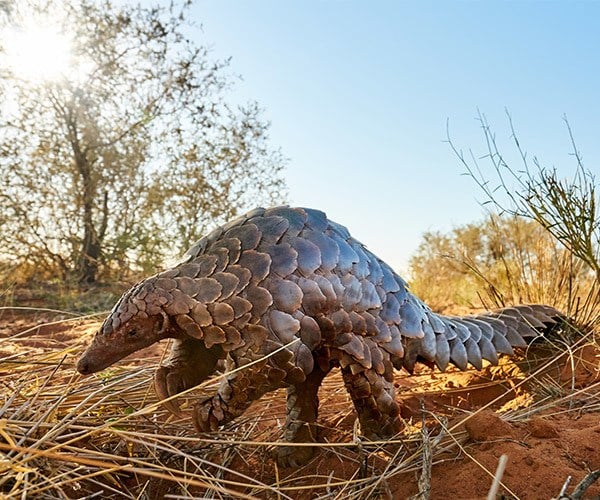
Tswalu Kalahari is pioneering the restoration of natural habitats on the edge of the Kalahari Desert. It’s a fascinating place to see arid savannah creatures like eland, brown hyena, meerkat and African wildcat. Valery Phakoago is based there, conducting PhD research into ground pangolins, so we can understand these shy creatures better. On a walk you may see a young pangolin curl into a protective ball as you approach before she relaxes and moves off to forage for ants and termites.
Clouds Mountain Gorilla Lodge, Uganda – Mountain gorillas
The world’s remaining mountain gorillas live in the misty volcanic hills where Rwanda, Uganda and the Democratic Republic of Congo meet. The main threats to these mighty creatures are accidental snaring, hunting and disease. Determined efforts by national parks staff and high value tourism mean that populations have risen from 620 in 1989 to just over 1,000 today, with numbers growing steadily in all three countries.
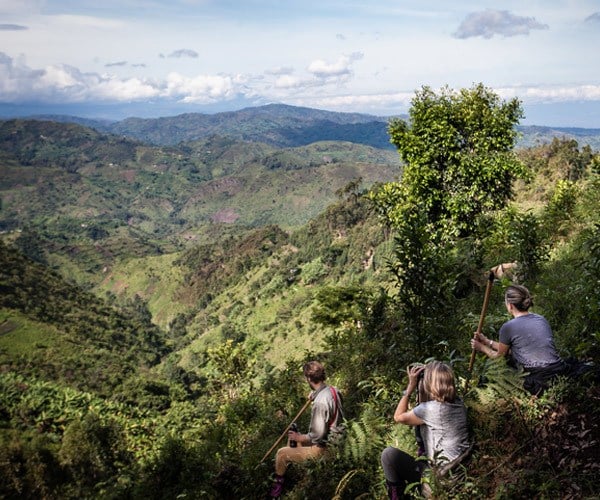
Making your way through the “King Kong” setting of mists, forests and volcanoes in search of gorillas is an experience of a lifetime, and the eventual encounter is awe-inspiring. The cost of doing so is high, but funds from gorilla permits help pay for armed rangers and conservationists who protect these great primates. From Clouds Mountain Gorilla Lodge in Uganda, you can enjoy a unique morning spent in the company of a semi-habituated gorilla family, assisting the conservationists in their efforts and experiencing one of the most raw and immersive encounters imaginable.
Namiri Plains, Tanzania – Cheetah
A cheetah can go from 0 to 60mph in three seconds, rivalling the fastest sports cars. Watching one of these lithe felines racing across the plains in pursuit of a gazelle is to see poetry in dazzling motion. But speed is not everything – in the Serengeti and Masai Mara combined there are only 300 cheetah compared to 3,000 lion. The smaller cat suffers from competition with its bigger cousin and is killed by farmers and hunters. Cheetah cubs are seen as the ultimate feline pet in some middle eastern countries.
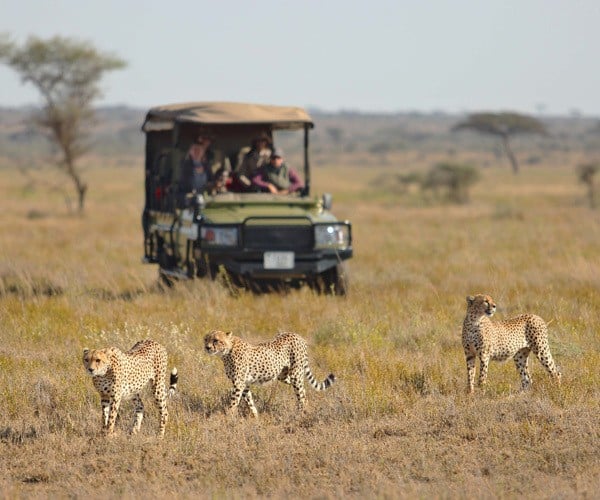
In the remote plains of the eastern Serengeti, over an hour from any other camp, is Namiri Plains. Previously closed to the public for 20 years, the oceans of undulating grasslands surrounding camp have been the setting for a successful cheetah conservation project. Now, with exclusive access to the area and with the option to meet the research team, it is one of the best places in Africa to see cheetah, alongside the other cats and the entire range of Serengeti wildlife. Incidentally, the 10 stylish tented suites are unashamedly luxurious, each with a bathtub on the deck where you can drink in the pristine views while soaking in bubbles.
Old Mondoro, Zambia – Elephant
You’re staying at the intimate and charming Old Mondoro Camp. As you watch elephant roaming past you to swim and wallow in the Zambezi waters, you would be forgiven for thinking that these mighty creatures can hardly be endangered. Yet the 30,000 people who live in villages adjoining the Lower Zambezi National Park see elephants trampling and stealing crops, while ivory poachers from neighbouring Zimbabwe and Mozambique are a constant threat.
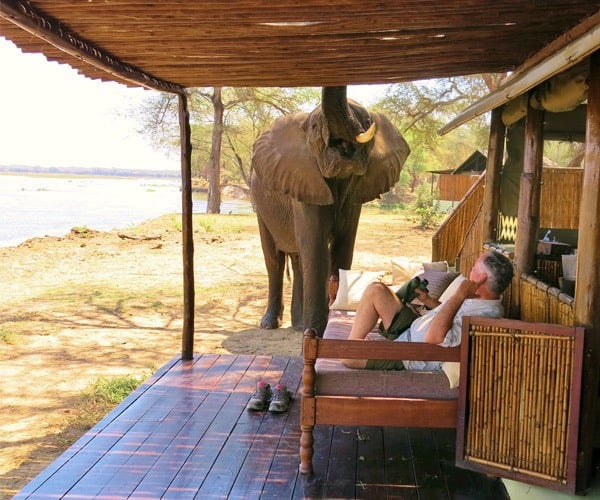
The exclusive little camps dotted along the Lower Zambezi are actively involved in ‘Conservation Lower Zambezi’, which operates anti-poaching patrols. They have also developed state-of-the-art ideas like helping village farmers grow “chilli fences” which deter elephants from entering farmland and produce a cash crop for sale. An elephant can knock over a tree and chew his way through a huge branch but they can’t stand chillies!
Lewa Wilderness, Kenya – Rhinoceros
Between 1960 and 2000, southern Africa’s rhinoceros population declined by a staggering 98% due to poaching for their horn. It’s still a serious problem as 80 rhinoceros are poached each month, especially in South Africa where the largest number of survivors remain.
One strategy for saving rhinoceros is to move them to safer locations, and in recent years some have been taken to Botswana where the vast private wildlife concessions and smaller populations of people provide safety. In Kenya, the Lewa Wildlife Conservancy pioneers rhinoceros conservation in dynamic partnerships with local communities and are so successful that they are able to send rhinos to newer conservation projects. You might stay at Lewa Wilderness Lodge with the Craig family, founders of Lewa, where these wonderful creatures and a spectacular array of other wildlife are thriving.
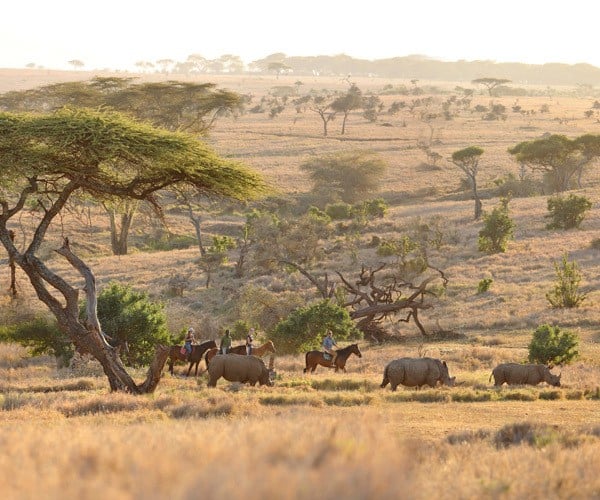
Laura Burdett-Munns is Managing Director at Africa Exclusive. Africa Exclusive has been creating the finest tailor-made safaris since 1990, specialising in luxurious accommodation in beautiful remote places.
If you would like to be a guest blogger on A Luxury Travel Blog in order to raise your profile, please contact us.
Did you enjoy this article?
Receive similar content direct to your inbox.


I think the pangolin has enjoyed a lot more attention in recent months, with some people believing that the outbreak of the COVID-19 coronavirus could be related to it. Hopefully this will generate more awareness for this endangered species and allow it to thrive in places such as Tswalu Kalahari.
Hello Joseph,
They certainly have received more widespread attention lately, as more light has been shed on the global wildlife trade. This is why I am so grateful for private reserves, like Tswalu, that offer safe havens for endangered species.
Thank you for reading,
Laura
In which country is it best to visit mountain gorillas – Rwanda or Uganda? To be honest, I’d never even considered Democratic Republic of Congo before, although I knew they were there also… is that a viable option?
Hello Arthur,
I personally wouldn’t recommend the DRC as a travel destination. The gorilla trekking experience is equally good in both Rwanda and Uganda, with options to suit different types of travellers. It is more expensive in Rwanda – the $1500 permits are double that of Uganda – but there are some incredibly high-end properties to choose from, such as Singita Kwitonda and Bisate Lodge. Others may prefer the better value offered in Uganda, as well as the chance to take part in the habituation experience from Clouds Lodge, which is still a very nice property!
Often it will depend on other countries you combine the trip with. Rwanda is easier to combine with Tanzania, flying straight from Kigali into the Serengeti. Uganda is easier to link with Kenya, flying from the Virunga Mountains into the Masai Mara in a single day.
I hope that this helps!
Best wishes,
Laura
Yes, definitely don’t consider DRC. There was an ambush in Virunga National Park there last month so I would have serious safety concerns about that option.
I’ve been fortunate enough so see cheetah in the Serengeti (as well as on a private enclosed game reserve in South Africa where they had been introduced), but I had no idea the numbers were so low there. That is really eye-opening for me. Are they also in strong decline there? It’s been a while since I was there.
Hi John,
Thank you for reading, I’m happy to hear that you’ve seen cheetah on your safaris! The population across Africa is in decline – there are an estimated 7,100 in the wild. South African populations are estimated between 1,200 and 1,300. There are a number of cheetah and big cat focused charities that are working to increase these numbers. AfriCat in Namibia is a great example.
The biggest thing felines need is space. Choosing to stay on private reserves, which protect land and wildlife, is one of the best ways we as travellers can help make a difference in the conservation of all species.
Best wishes,
Laura
Whenever I read about these places and countries, I can just see myself spending a decent chunk of my life traveling around there. Especially when I see the pictures and think about how remote it would seem to spend time there as an American citizen. I don’t know too many people who have been to Africa, so I’m hoping to be the first one.
Hi Brett,
I can never seem spend enough time in Africa! The continent is so expansive, so diverse, with so many wild places to discover that you could spend a lifetime exploring and never see it all.
I too hope that you will have the chance to visit someday.
Thank you for reading,
Laura
There can be a danger of focusing too much on one species though it is fair enough to seek mountain gorillas if you are heading for Uganda,
It’s often advisable to remember the old adage of travelling hopefully and with your eyes open.
Last year I went on a game drive where we saw around 20 elephants but for me the highlight of the day was the guide explaining the intricacies of the biggest termite nest that I’d ever seen.